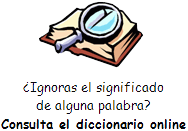 Imagine
that you are planning to travel to another country. There is a lot that
you need to do before you leave. Here are some things that might need to
be done: Imagine
that you are planning to travel to another country. There is a lot that
you need to do before you leave. Here are some things that might need to
be done:
Your passport has to be renewed.
Your hair still needs to be cut.
Your shoes should be repaired.
And your dog is supposed to be taken to a friend’s house.
All of these sentences use either modals or something called “phrasal
modals," and they are in the passive voice.
You may remember that, in a passive sentence, the person performing the
action is not stated because it is not very important to know who that
person is.
For example, in the sentence about the haircut, the listener does not
know who will cut your hair. But that is ok, because it is not very
important to that statement.
You may also recall that, for the passive voice, we use the structure be
+ past participle, as you noticed in all of the example sentences.
Now, let’s move on to a quick reminder about modals:
Modals are helping verbs that express possibility, ability, duty,
permission or advisability. Words like can, could, may, might, must and
should – and even will – are all modals. But modals also include
something called “phrasal modals” – phrases such as has to, ought to and
be supposed to.
As you heard in our examples at the start of the program, we sometimes
need the passive form of modals and phrasal modals.
But, don’t worry! This is surprisingly simple.
The structure is: modal or modal phrase + be + the past participle.
For example, in the sentence about the haircut, need is the modal. Then
comes the verb be, and its form does not change. And, cut is the past
participle of the irregular verb to cut.
The past-passive form
Ok, now imagine that some of the things on your travel “to do” list are
complete. But, some of the other things still need to be completed.
How can you tell someone this using the past tense of modals and phrasal
modals?
For all modals and some phrasal modals, the only difference is changing
be to have been. So, the structure becomes modal or modal phrase + have
been + the past participle. Listen to an example.
My shoes should have been repaired last week.
In this sentence, should is the modal. Then comes have been – which
stays the same – plus repaired, which is the past participle of the verb
to repair.
But for other phrasal modals – ones that contain the verb be – the be
changes to past tense. This includes the phrasal modals be supposed to,
be able to and be allowed to.
The structure for this is: past tense form of be (with) phrasal modal +
have been + the past participle.
Here is an example:
My dog was supposed to have been taken to a friend’s house.
Here, the be changes to was. And notice that the words have been still
do not change. And, the past participle of the verb to take is taken.
Asking a question
But, what if you want to ask a question? Using the question form of many
English grammar structures can be tricky.
So let’s try to make questions out of a few of our example sentences.
When asking a yes-or-no question, the question can begin with one of
several words. For instance, it may begin with the modal, such as should,
can and could, or with the word do, did or does or is or are?
Here is an example with does:
Does your passport have to be renewed?
Here is one with is:
Is your dog supposed to be taken to a friend’s house?
And, here is an example with should:
Should your shoes be repaired by next week?
Avoiding the passive
At times, it is best to avoid the passive voice; the sentence structure
can create unclear statements. And, in some types of academic writing,
such as essays, passive voice is usually discouraged. However, in other
types of written and spoken communication, it is readily used. You will
see and hear the passive voice in written and broadcast journalism,
scientific writing and sometimes in formal letters. And, of course, we
use the passive voice in informal speech and writing. So, it is useful
to know how to use passive modals.
What can you do?
So, what can you do to practice? Here are a few possibilities. Feel free
to write your answers in the comments section:
1. Imagine that you manage a company. You must write a memo to remind
your employees what the company policies are. This includes dress code,
social behavior and use of the kitchen and appliances. Start your memo:
“This is a friendly reminder about office rules.” Then, use passive
modals to write the rules. For example: “Dishes may be used, but they
must not be left dirty in the sink.”
2. Think about what is happening around your city. What are some things
that need to, should, could or may happen or have already happened? For
example, do the streets need to be repaired? For this practice, you can
use the passive form or past-passive form. Here’s an example: “The new
metro station should be completed in 2018.” That's the passive modal. Or
“The new metro should have been completed in March.” That's the past-passive
modal.
And, if you're feeling brave, you can even try using the question form
of passive or past-passive modals.
Learning these grammar structures is not too difficult, and I am here to
tell you this: it can be done.
|
 Sugerencias:
Sugerencias:![]() ). Utiliza el botón derecho del ratón y "guardar enlace" para
descargar el fichero a tu PC, tablet, Smartphone, etc.
). Utiliza el botón derecho del ratón y "guardar enlace" para
descargar el fichero a tu PC, tablet, Smartphone, etc.
![]() Escucha el audio
Escucha el audio
![]() ¿Quieres recibir en tu e-mail gratis y
periódicamente ejercicios, programas gratuitos, explicaciones y otros recursos
para mantener tu inglés sin esfuerzo? Apúntate a nuestro
cuaderno mensual de inglés.
¿Quieres recibir en tu e-mail gratis y
periódicamente ejercicios, programas gratuitos, explicaciones y otros recursos
para mantener tu inglés sin esfuerzo? Apúntate a nuestro
cuaderno mensual de inglés.




